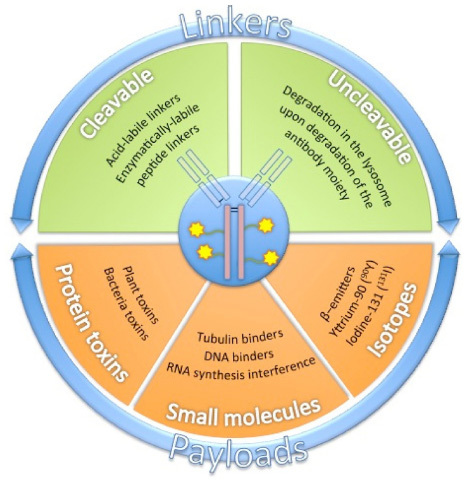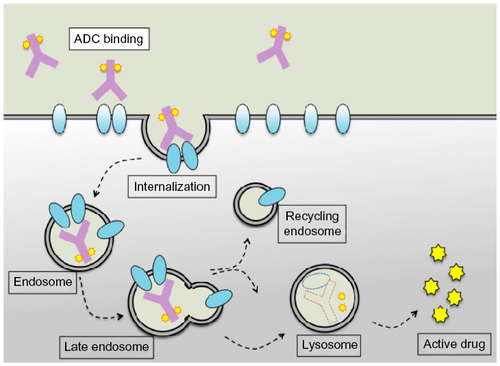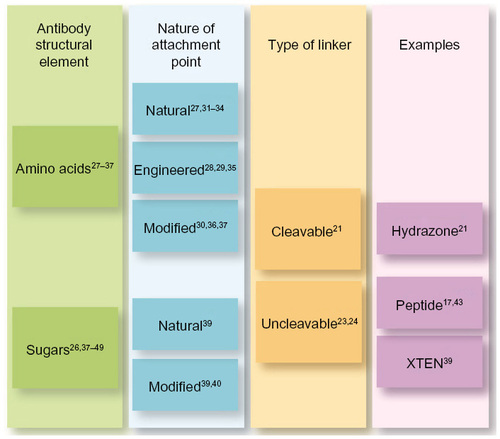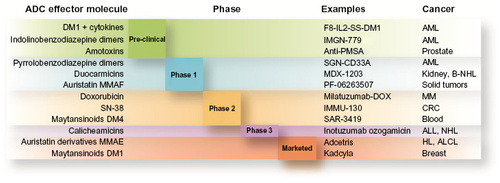Figures & data
Figure 1 Immunoconjugate components. An antibody, shown in the center of the chart, is conjugated to an effector molecule (payload) belonging to one of three main categories (protein toxins, small molecules, or isotopes). The conjugation occurs via a linker, classified into two main categories (cleavable or uncleavable), depending on its chemical features.

Figure 2 Mechanism of action of ADCs. The antibody–drug conjugate (purple Y shape with little stars) binds to the target receptor (blue ovals) on the cell surface and is internalized by endocytosis. Processing through the endosome–lysosome pathway leads to antibody detachment, recycling of the receptor toward the cell membrane and release of the effector molecule in the form of active drug.

Figure 3 Linkers. Classification of linkers according to the available technologies. Beyond cleavable and uncleavable linkers, site-specific conjugation is the most relevant field of investigation at the moment, with several novel emerging technologies.

Figure 4 ADC pipeline. Clinical phase of ADCs classified by effectors, and target tumors.

